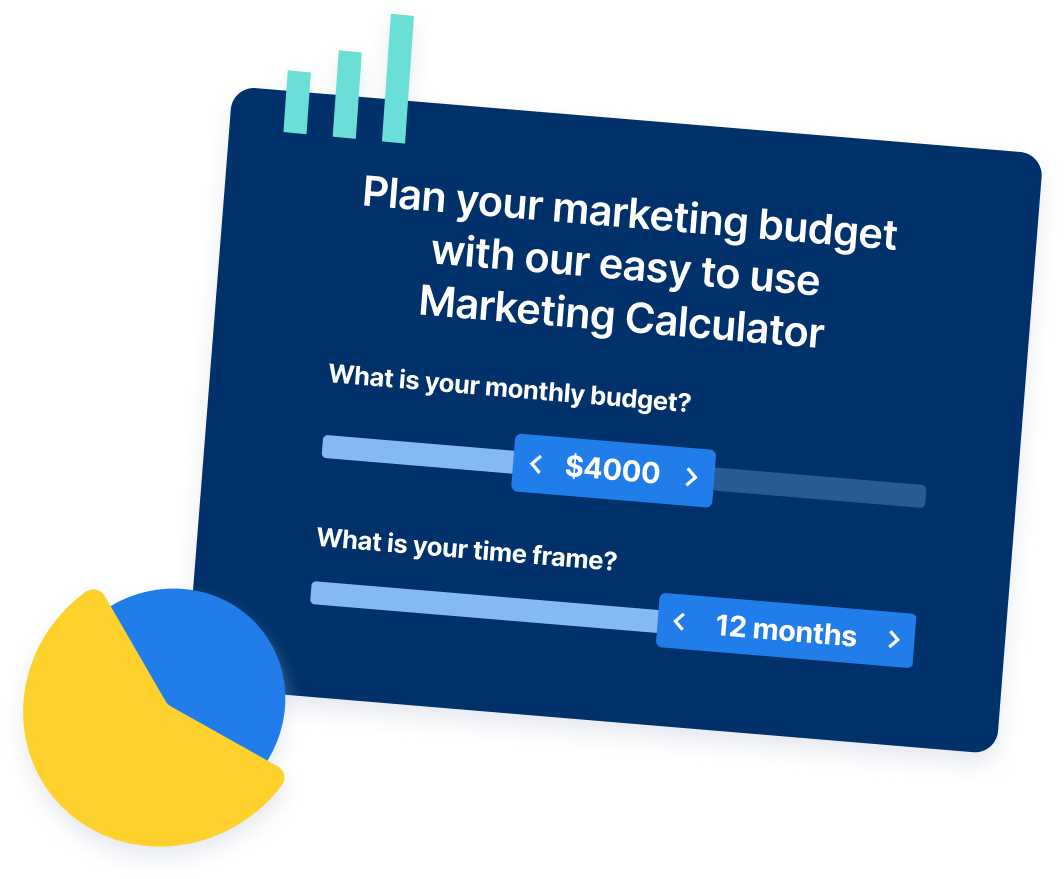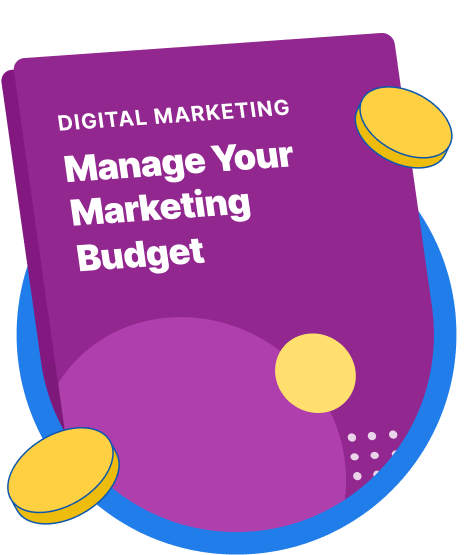-
 Published: Mar 1, 2023
Published: Mar 1, 2023
-
 11 min. read
11 min. read
-
 Macy Storm
Macy Storm Senior Content Creator
Senior Content Creator
- Macy is a marketing writer with over five years of experience creating content for dozens of industries including food and beverage, home services, and education. She also specializes in creating SEO and PPC content. Her work has been featured by Search Engine Journal, HubSpot, Entrepreneur, Clutch, and more. In her free time, Macy enjoys trying new crafts and reading comic books.

What is lead scoring?
Lead scoring is the process of assigning values to each lead you generate. You use a numerical scale to help grade leads with points. Leads that have the most points are the most valuable to your business because they’re likely to convert.
When you’re trying to generate leads for your business, you want to ensure you’re reaching people that will turn into paying customers for your business. With lead scoring, you can get a better idea of who most likely will or won’t turn into a conversion for your business.
This process helps you focus more on the high-potential leads and getting them to convert.
On this page, we’ll dive into the ins and outs of scoring leads. Here’s a quick overview of everything we’ll cover:
- What is lead scoring?
- The lead scoring process
- The benefits of lead scoring
- Lead scoring models
- How to score leads
If you need help scoring and prioritizing your leads to drive more leads that convert, contact us today or call at 888-601-5359 to speak with a strategist about how to generate more valuable leads for your business.
Our digital marketing campaigns impact the metrics that improve your bottom line.
See More Results
WebFX has driven the following results for clients:
$6 billion
In client revenue
24 million
Leads for our clients
7.14 million
Client phone calls
What is lead scoring?
Lead scoring is the process of assigning values to each lead you generate. You use a numerical scale to help grade leads with points. Leads that have the most points are the most valuable to your business because they’re likely to convert.
The lead scoring process
You’ll score leads based on multiple attributes. You can score them based on information they submit, as well as how they engage with your website and brand.
This lead scoring process allows your sales and marketing team to prioritize leads based on where they are in the marketing funnel. Your sales team can focus on closing leads that are close to converting, while your marketing team can focus on producing content that will turn standard leads into hot leads.
It makes your system more efficient because your team can prioritize their strategy and focus on what is most important. When it comes to your lead scoring model, you’ll want to create one that works best for your business. Each company has their model for assigning points.
You’ll want to create a point system that fits with your business and the natural path your leads take to converting.
3 Significant benefits of lead scoring you should know
So, now that you know the answer to the question, “what is lead scoring,” and its process, let’s dive into why its important.
Scoring your leads gives you a one-way ticket to more sales and revenue. Find out how with our list of lead scoring benefits below!
1. Massive time savings
The whole purpose of scoring leads is to streamline your sales process. When you assign a score to new leads, you can prioritize the leads with the highest score because they are most likely to convert and become a paying customer.
That means you’ll spend less time trying to convert leads that likely won’t convert anyway.
2. Higher conversion rates
Scoring leads enables you to quickly identify the leads who are most likely to convert. As a result, you can priortize nurturing these high-value leads right away so you don’t miss out on a sale, earning you higher conversion rates in the long run.
3. Lower marketing and acquisition costs
When you spend time nurturing leads that won’t convert, you waste time and resources. With lead scoring, you can eliminate this problem.
You’ll be able to immediately find the leads who are most likely to become customers, allowing you to funnel your lead nurturing efforts and marketing messages to them instead of wasting your efforts on people who won’t pay for your products or services.
93% of WebFX customers are extremely satisfied with their digital marketing results.
“Working with WebFX, everything is very organized and strategic. We’re only a year into our partnership, and our expectations have definitely been met.”
View More Client Testimonials

3 types of lead scoring models
To start using scoring your leads, you must create your scoring model. There are three types of lead scoring models you can set up. Let’s take a look at these different models:
1. Demographic model
The demographic model is a standard model that businesses use to score their audience. This option is great if you’re only targeting people from a specific group. For example, you may be targeting only parents or young adults.
To use this model, you will ask demographic questions in forms on your site. The most common way to obtain this information is through landing pages. There, you can have people fill out forms to see if they fit in your target audience. This process is an excellent way for you to remove outliers from your sales team’s list.
If someone doesn’t fall into a category you sell to, you can subtract points from their score to help you weed out less relevant leads. For example, let’s say you only sell products to women. If someone fills out your form that isn’t a woman, you will subtract points from their score. Similarly, if you were targeting people in a specific geographic location (city, state, zip code), you could exclude anyone that doesn’t live in that area.
This scoring model is an excellent option if you’re looking to reach specific people. It’s helpful if you have a general idea of who you’re trying to target.
2. Online behavior model
Another favorite scoring model is the online behavior model. This model looks at leads who eventually converted and how they took the path to conversion. When you use the online behavior model, you’ll want to know:
- What pages did they visit on your site?
- How many pages did they visit on your site?
- Did they sign up for emails or follow your social profiles?
- What offers did they download?
- How many offers did they download?
- How long did they spend on your pages?
These are some questions you’ll want to answer to understand your audience’s online behavior better. You’ll want to give higher scores to leads that visit your high-value pages, like pricing pages. You’ll also want to give higher ratings to people who visit more pages.
You can also subtract points based on interactions with your site. If people engage less with your site, you can deduct points based on the number of days that it’s been since they interacted with your website. It could be two points for 30 days, four points for 45 days, and 6 points for 60 days. The number of days and points will depend upon your scale, but you can quickly implement this strategy into your own to help you weed out leads that don’t interact with your business any longer.
By utilizing the online behavior model, you’ll target people more based on the way they interact with your business. It’s one of the best scoring models that allows you to target people based on their interest in your business.
3. Engagement model
The engagement scoring model is slightly similar to the online behavior model, but it focuses solely on how leads interact with your brand. This model doesn’t look at how people converted for your business previously, but rather, how they engage with your business. This model focuses on the principle that if a lead is more engaged with your brand, they are more likely to become customers for your business.
The first part of the engagement model you can use to analyze behavior is email marketing. You’ll want to look at leads that subscribe to your email marketing campaign and see how they interact with your emails. You’ll want to consider who opens every email, who clicks through emails, how many emails they open (if not all), and whether they scroll to the bottom of the email and read everything. These are engagement behaviors that the most interested leads will do.
Aside from email engagement, you will also look at social engagement. With social engagement, you’ll want to see who engages with your brand on social networks. These engagements include liking social posts, retweeting, sharing, commenting, and more. You can assign point values for each of these engagements to figure out who is interacting with your business the most.
Through the engagement scoring model, you find leads for your business based on people who interact with your brand the most.
How to score leads: 4 Lead scoring best practices
Ready to learn how to score leads? Take a look at these four best practices:
1. Use negative scoring
To be successful with scoring leads, you must implement negative scoring. Negative scoring allows you to weed out people who visit your website but aren’t leads to your business.
For example, employees and job seekers aren’t relevant leads to your business. Employees are often on your site and clicking around to make sure links are working and that everything looks good on your website. Job seekers, likewise, will click on an abundance of pages on your site in the process of getting to know your business.
It’s essential that you use negative scoring to prevent your site scores from getting muddled. You won’t be ranking people who visit your site frequently for alternative reasons.
It allows you to focus on people who are actual leads for your business. If you’re constantly giving high scores to unqualified leads, like employees and job seekers, it will cause actual leads to fall in ranking and potentially be missed entirely.
This process makes those leads seem less relevant, even though they are the most suitable for your business.
Negative scoring is an essential practice for helping you focus on the right leads that are most interested in your business.
2. Work with your sales team
The next step in how to score leads is to work with your sales team.
Your sales team will know your audience better than anyone else. They communicate directly with people who convert and people who don’t. Utilize your sales team to get insight into your audience to help you create a better scoring model.
You’ll want to ask your sales reps about what gets people to convert, since they may know that a particular video or blog post is an excellent selling point for your audience. You can use that insight to help with your grading scale and determining point values for leads.
This strategy also helps you to create a better plan overall. If you know what type of content or pages work best for your audience, you can create similar content to those pages to keep your audience happy.
By working with your sales team, you will have better insight into your audience and can create a more effective scoring model for your business.
3. Don’t use just one score
One of the biggest mistakes businesses make is using one score for their entire audience. If you have a diverse audience, you don’t want to use one score to rank them all. Not everyone in your audience interacts with your business for the same reasons. The only time you should use a single score is if you’re aiming to reach one group.
If you have a diverse audience, you’re going to need more than one scoring system. It’s a necessity if you’re expanding into new product lines, new audiences, or new regions, too. Let’s say you own a clothing business that offers clothes for men, women, teens, kids, and babies. Imagine grouping all those people together and scoring them all the same.
It wouldn’t be an effective scoring system because all of these groups have an interest in your business for different reasons and engage with you differently. A teen may be more actively engaging on your social media profiles than a 50-year-old male, which gives the teen a higher score than the older male.
This scenario doesn’t mean the older male isn’t interested in your clothing; it just means that he interacts with your business differently than the teen.
By using different scoring systems for varying audience groups, you will drive better results for your business and obtain more valuable leads.
4. Talk to your customers
One of the most critical lead scoring best practices is to talk to your customers. Customers often have a different experience than how the sales team describes it.
To be successful, you need to account for all angles of the sale and hear from both sides. Conduct customer interviews to learn what got them to convert. You can send out a short survey asking for their feedback to get a better idea of what convinced them to buy your products or use your services.
You’ll want to interview customers from short and long buying cycles. It’s a great way to help you understand what gets someone to convert quickly or what causes someone to take time to decide on converting.
By talking to your customers, you’ll have a better understanding of what gets your audience to convert and how you can use that data to create a better scoring model.
We foster and form long-term partnerships so that your business has long-term results.
Over 90% of WebFX clients continue partnering with us into year 2 of their campaign.
Hear from Our Happy Customers

Earn more conversions by implementing a lead scoring model today
Scoring your leads is an excellent way for you to get insight into your audience and better understand what makes leads turn into conversions. By using this method, you’ll help your business focus on more relevant leads and get them to convert.
At WebFX, we know how to drive leads that convert for your business. In the past five years, we’ve driven over 24 million leads for our clients. You can count on us to help you create a scoring system that drives the best results for your business.
If you’re ready to start earning more conversions for your business, contact us online or call us today at 888-601-5359 to speak with a strategist about our lead generation plans.
-
 Macy is a marketing writer with over five years of experience creating content for dozens of industries including food and beverage, home services, and education. She also specializes in creating SEO and PPC content. Her work has been featured by Search Engine Journal, HubSpot, Entrepreneur, Clutch, and more. In her free time, Macy enjoys trying new crafts and reading comic books.
Macy is a marketing writer with over five years of experience creating content for dozens of industries including food and beverage, home services, and education. She also specializes in creating SEO and PPC content. Her work has been featured by Search Engine Journal, HubSpot, Entrepreneur, Clutch, and more. In her free time, Macy enjoys trying new crafts and reading comic books. -

WebFX is a full-service marketing agency with 1,100+ client reviews and a 4.9-star rating on Clutch! Find out how our expert team and revenue-accelerating tech can drive results for you! Learn more
Try our free Marketing Calculator
Craft a tailored online marketing strategy! Utilize our free Internet marketing calculator for a custom plan based on your location, reach, timeframe, and budget.
Plan Your Marketing Budget

Maximize Your Marketing ROI
Claim your free eBook packed with proven strategies to boost your marketing efforts.
Get the GuideTry our free Marketing Calculator
Craft a tailored online marketing strategy! Utilize our free Internet marketing calculator for a custom plan based on your location, reach, timeframe, and budget.
Plan Your Marketing Budget





